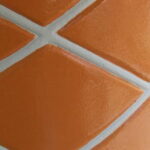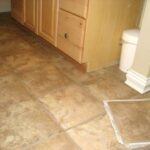Bathroom tiles add a great look to any bathroom facility and help to waterproof the area with a ceramic base. But many times, these materials can cost a fortune, take a long time to install and require extensive knowledge and skills to get the job done right. Plastic shower panels like these install in minutes, require few tools and skills and make a shower or tub enclosure look like a million bucks using just pennies on the dollar. Use these tips and techniques for installing a plastic shower enclosure and you’ll be sure to get the most out of your bathtub remodeling project.
Step One: Prepping the Area
Many of these materials are easily installed over existing bathroom products like tile. They are simply glued into place using an epoxy or adhesive that secures the plastic panels to the substrate. What’s great about that is the prep time is that it is very minimal and the finished result is something spectacular. Prep the area by ensuring that all grease, soap and other non-bonding agents are removed from the substrate. A quality floor or wall degreaser is sure to clean the area and prep it for the most common of adhesives.
Step Two: Remove the Hardware
Take off all of the hardware around the tub or shower. Faucet handles, tub knobs and any other penetrations should be extracted and set aside.
Step Three: Test Fit the Panels
Most plastic shower enclosure panels are easily fitted to their location. While it often doesn’t require cutting, plastic panels for your tub can be cut using a simple utility knife or shears to cut the panels to the correct fit. No matter where or how you cut panels, be sure that they are cut so the ragged edge fits securely into the panel’s corner pieces so that the edges are hidden behind the covering trim pieces and not on the exposed edge of the shower enclosure.
Test fit the pieces, make a mark using a pencil and safely cut the pieces to the required width and length using a straight edge. Set the panels aside until all pieces are trimmed and fit according to the manufacturer’s specifications.
Step Four: Glue
Now that the panels are cut to fit, you can easily attach the panels into place using this plastic epoxy that is certified to fit. Spread the glue onto the back of the panels in a back and forth motion so that a continuous bead is applied across the panels horizontally from end to end with a 2-4″ space between rows. Press the panels into place and let them harden in place.
Step Five: Trim
Add the trim in the corner using the same adhesives you used on the walls. Press the trim into place and be sure to wipe away all excess adhesives from the panels.
Step Six: Seal the Seams
Clear or white silicone caulk like this is used to seal the seams where the plastic panels meet each other, the walls and the tub. Because this caulk is so sticky, you’ll need to tape the seams or use a delicate hand to adhere the caulk in place. This caulk can’t be wiped away easily so you’ll need to ensure the first bead of caulk is the final bead you install. I like to use a water-based silicone for easy cleanup, but as long as you install a consistent bead, your plastic bathtub enclosure should look perfect no matter what type of silicon you use to seal the panels.




